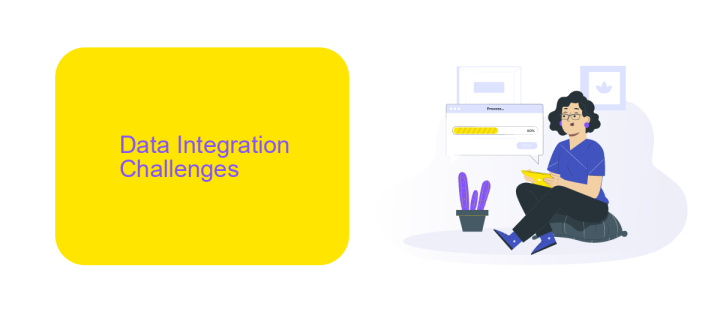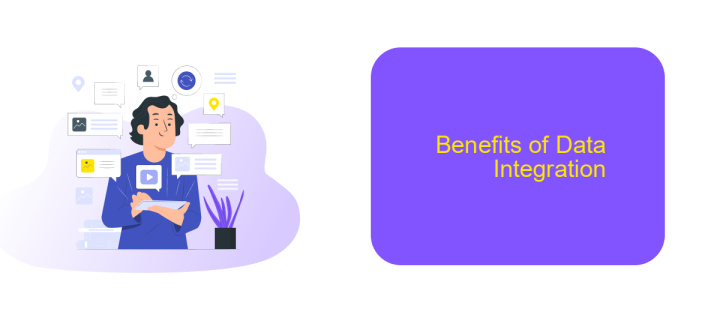Data Integration Overview
Data integration is a critical process that combines data from different sources into a unified view, enabling more efficient analysis and decision-making. In today's data-driven world, organizations rely on seamless data integration to enhance operational efficiency, improve customer experiences, and gain competitive advantages. This article provides an overview of data integration, its importance, key methods, and best practices for successful implementation.
Introduction
Data integration is a critical process for organizations seeking to consolidate information from various sources into a unified view. This practice enhances data accessibility, improves decision-making, and fosters operational efficiency. As businesses grow, the complexity of managing disparate data sources becomes increasingly challenging, necessitating robust integration solutions.
- Combines data from multiple sources
- Enhances data quality and consistency
- Facilitates real-time data access
- Supports data-driven decision-making
Several tools and services are available to streamline data integration processes. One such service is ApiX-Drive, which offers seamless integration capabilities between various applications and platforms. By leveraging ApiX-Drive, organizations can automate data workflows, reduce manual efforts, and ensure that data is synchronized across all systems in real-time. This not only saves time but also minimizes the risk of data discrepancies, enabling businesses to focus on strategic initiatives.
Data Integration Challenges

Data integration presents numerous challenges, primarily stemming from the diversity of data sources and formats. Organizations often struggle with consolidating data from disparate systems, each with unique protocols and structures. This heterogeneity complicates the extraction, transformation, and loading (ETL) processes, leading to data inconsistency and potential loss of critical information. Additionally, ensuring data quality and maintaining data integrity across various platforms is a persistent challenge, often requiring significant manual intervention and sophisticated validation mechanisms.
Another major hurdle in data integration is the synchronization and real-time updating of data. As businesses increasingly rely on up-to-the-minute information, the need for seamless, automated data flows becomes paramount. Tools like ApiX-Drive can facilitate this process by providing user-friendly interfaces for setting up integrations without extensive coding knowledge. ApiX-Drive enables the automation of data transfer between applications, ensuring that data remains current and accurate across all systems. However, even with such tools, organizations must continuously monitor and manage their integrations to address any emerging issues promptly.
Data Integration Solutions

Data integration solutions are essential for businesses aiming to consolidate information from various sources into a unified view. These solutions streamline operations, improve data accuracy, and facilitate better decision-making processes.
- ETL (Extract, Transform, Load) Tools: These tools extract data from different sources, transform it into a suitable format, and load it into a data warehouse or other storage systems.
- API Management Platforms: Platforms like ApiX-Drive enable seamless integration between disparate systems by providing pre-built connectors and automation capabilities.
- Data Virtualization: This approach allows users to access and manipulate data without needing to know its physical location or format, providing a real-time view of integrated data.
- iPaaS (Integration Platform as a Service): These cloud-based solutions facilitate the integration of applications and data across different environments, ensuring smooth data flow.
Choosing the right data integration solution depends on various factors such as the complexity of data sources, the volume of data, and specific business requirements. Tools like ApiX-Drive offer user-friendly interfaces and robust features that make the integration process more efficient, allowing businesses to focus on leveraging their data for strategic advantages.
Benefits of Data Integration

Data integration is a crucial aspect of modern business operations, enabling organizations to combine data from various sources into a unified view. This process helps in making more informed decisions, improving efficiency, and enhancing overall business performance.
One of the primary benefits of data integration is the ability to access real-time data, which allows businesses to respond quickly to market changes and customer needs. Additionally, integrated data provides a holistic view of the organization, facilitating better strategic planning and forecasting.
- Improved data quality and consistency
- Enhanced decision-making capabilities
- Increased operational efficiency
- Streamlined business processes
- Better customer insights and personalization
Services like ApiX-Drive simplify the process of data integration by providing user-friendly tools to connect various applications and automate data workflows. This allows businesses to save time and resources while ensuring that their data is accurate and up-to-date. By leveraging such services, organizations can focus more on their core activities and less on managing complex data integration tasks.


Conclusion
In conclusion, data integration is a critical component for organizations aiming to streamline their operations and enhance decision-making processes. By consolidating data from various sources, businesses can achieve a unified view of their information, leading to more accurate insights and efficient workflows. The complexities involved in data integration, such as data quality, security, and compatibility, require careful planning and the right set of tools to address these challenges effectively.
Services like ApiX-Drive play a pivotal role in simplifying the data integration process. ApiX-Drive offers an intuitive platform that enables seamless connectivity between diverse applications, ensuring that data flows smoothly and securely across systems. This not only reduces the time and effort required for manual integration but also minimizes the risk of errors, ultimately leading to more reliable and actionable data. As organizations continue to evolve in the digital age, leveraging robust data integration solutions will be essential for maintaining a competitive edge and driving innovation.
FAQ
What is data integration?
Why is data integration important?
What are the common challenges in data integration?
How can businesses automate data integration processes?
What are the best practices for successful data integration?
Time is the most valuable resource in today's business realities. By eliminating the routine from work processes, you will get more opportunities to implement the most daring plans and ideas. Choose – you can continue to waste time, money and nerves on inefficient solutions, or you can use ApiX-Drive, automating work processes and achieving results with minimal investment of money, effort and human resources.

